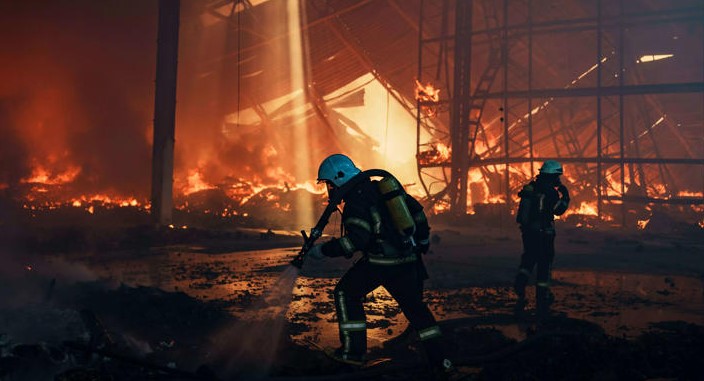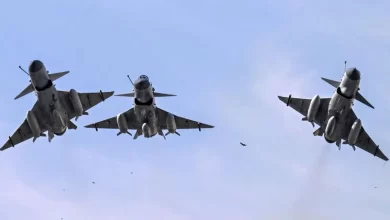Putin is running low on long-range precision weapons, and he’s wasting his dwindling supply terrorizing Ukrainians in cities far from the front lines, war experts say

- Russian forces unleashed a barrage of long-range precision weapons on Ukrainian civilians and infrastructure this week.
- But Putin has a limited amount of these munitions in his arsenal, experts and officials say.
Russian forces expended a lot of long-range precision munitions this week, drawing from an increasingly limited stockpile to fire on civilian targets across Ukraine in attacks that experts say do little if anything to advance Moscow’s objectives in this war.
Russian President Vladimir Putin’s forces fired missiles and suicide drones at civilians and infrastructure across the country, spreading terror and chaos, in a reprisal for attacks Russia considered too close to home, specifically an explosive attack on a strategic bridge.
Not only do such acts appear to violate the recognized rules of war, but military experts and officials say this Russian terror campaign is a waste and is not sustainable given Putin’s dwindling supply of long-range precision weapons.
“It’s clear they have a limited amount,” one expert familiar with military and warfare operations told Insider, adding that Russian forces simply “do not have the capability” to make this a regular approach and conduct widespread attacks multiple days a week for the next few years.
Russian forces on Monday and Tuesday let loose a deadly barrage of cruise missiles and Iranian-made suicide drones on cities hundreds of miles from the battlefield, such as Kyiv and Lviv, among others.
Putin said the attacks this week were carried out in retaliation for a recent blast on a key Crimean bridge, which served as a critical supply line, and claimed that Russia only targeted Ukrainian military, energy, and communications targets. However, video and photo evidence of damaged civilian areas painted a very different picture.
For months, Russian strikes away from the battlefield have been rare, but they have become more commonplace in recent weeks. A top official in the Ukrainian Armed Forces said earlier in the week that the military’s air defense systems have been downing a significant number of missiles and drones, often with fewer than half reaching the intended targets.
Given Russia’s limited supply of precision munitions and the effectiveness of Ukraine’s air defense, which the US and other NATO countries are working to bolster, military experts and officials have questioned the sustainability of a civilian terror campaign.
A ‘limited amount’ of missiles and suicide drones
In an analysis earlier this week, the Institute for the Study of War, a Washington-based think tank, noted that Russia wasted a “dwindling” supply of precision weapons by attacking civilian targets instead of those with military significance.
“Russian attacks on the Ukrainian energy grid will not likely break Ukraine’s will to fight, but Russia’s use of its limited supply of precision weapons in this role may deprive Putin of options to disrupt ongoing Ukrainian counter-offensives” along the war’s eastern and southern fronts, the analysis said.
An anonymous Western official told reporters on Friday that intelligence suggests Russia is “exhausting” its supply of long-range munitions — specifically cruise missiles — and is unable to conduct this kind of warfare indefinitely.

“They have a limited amount,” Gian Gentile, a retired US Army colonel and military researcher at the RAND Corporation, recently told Insider. Russian forces, he said, do not have the capability to do this “three or four days a week for the next two years. They just don’t have that, unless they’re willing to kick it up a whole bunch of notches and start using tactical nuclear weapons.”
So unless Putin is willing to “go nuclear,” Gentile said, the Russian leader does not have the capability to launch a conventional total war in Ukraine.
With a waning stockpile of precision missiles, Russia has at times been forced to turn toward less-capable and older munitions, according to a recent article by Ian Williams, deputy director for the missile defense project at the Center for Strategic & International Studies.
And this situation has been a growing problem for Russia throughout the war. Justin Bronk, a leading air warfare analyst with the UK’s Royal United Services Institute think tank, observed in April that Russian forces entered the war with a limited supply of precision-guided munitions. In May, a senior US official told the New York Times that Russia was increasingly reliant on unguided bombs after going through its more modern missiles.







